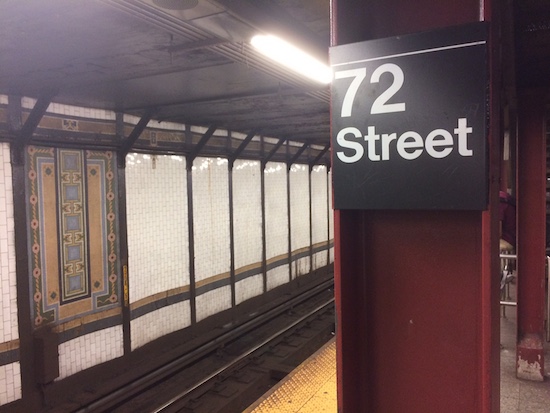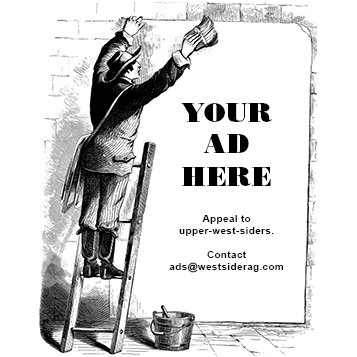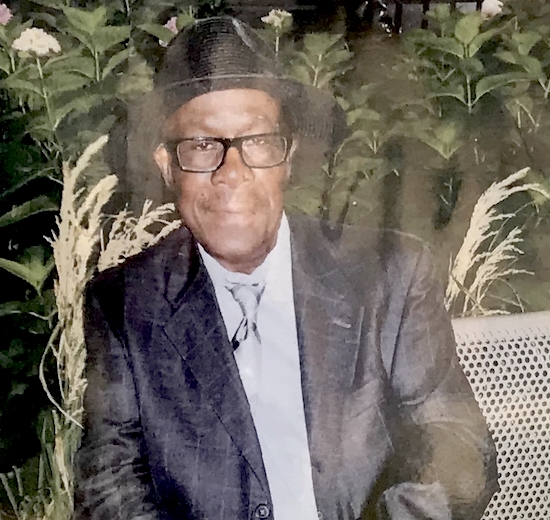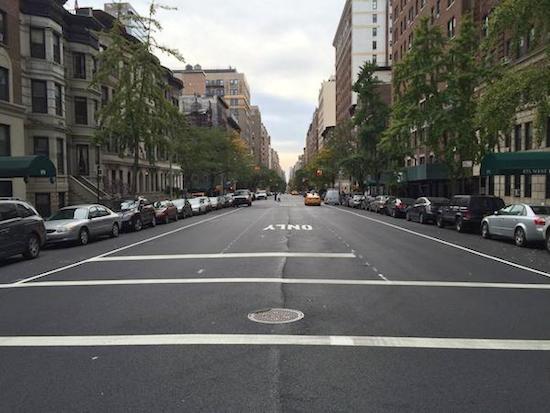Subway ridership is down more than 90% since stay-at-home orders have been in place. New York won’t fully come back until people start riding the subway again. So, assuming the city is on the rebound late this summer, what could the subway look like?
MTA Chairman Pat Foye recently went on the Wall Street Journal’s podcast “The Journal” to discuss that issue. The MTA released the transcript. It’s worth listening to the whole thing, which you can do here or search for “The Journal” in whatever podcast app you use.
Here’s his response to interviewer Kate Linebaugh’s question on what the subway could look like in three months.
Foye: “I think you are going to see, everybody, every employee and every passenger having a mask or a bandana or a scarf or a facial covering. I think that’s de riguer and I think there will be great social pressure in every context including transit to wear your mask. I think it’s likely that the cars and the stations will have been disinfected the evening before, the night before, so I think there will be the smell of bleach or the application of antimicrobial products. I think there will be less density on the cars. I think there is likely to be indications on the floor of the subway car as to enter here and leave here, in this area there ought to be no more than X passengers. I think it’s likely that in this time period we will have expanded [the] initiative – we started probably four to five weeks ago, maybe a little bit longer, called the “temperature brigade.” We have a total workforce of call it 70,000. We’ve been been taking temperatures at facilities, subways, buses, Metro-North, a Long Island Rail Road, Bridges and Tunnels, as well – we have taken temperatures of about 18,000 employees. and employees have welcomed it – we have had in that group about 46 employees who have been directed to go home because they had a fever above 100.4. I think that’s likely to continue. There will also be, and there are today protective provisions, devices, and policies in place to protect our employees – our passengers on buses, Metro-North, Long Island Rail Road. For instance, we instituted rear-door boarding on our local buses to minimize contact between bus operators and passengers. We have eliminated cash on subways, buses, Metro-North, and Long Island Rail Road have the elimination of cash. And I think the elimination of cash frankly not only in transit, but across the country and across society I think this is a trend that is going to accelerate even further.”
The city is also likely to encourage businesses to stagger work hours and allow people to work from home for a longer period, to make sure that the subway isn’t too crowded, Foye said.
Is this encouraging? Let us know your thoughts in the comments.











Subway ridership already was going down the toilet for a host of reasons before covid-19. Anyone who thinks those with options are going to subject themselves to being on a crowded train (with or without everyone wearing masks) is delusional.
Less riders means lower revenue for a system already bleeding red ink. Maybe if democrats sweep all three branches of government in November there might be an appetite in 2021 for increased federal aid to MTA/NYCT. Otherwise as things stand now I shouldn’t bet on that happening.
This not withstanding some pretty valid fiscal arguments. MTA/NYCT is a wasteland of corruption, waste and abuse. Projects that cost far less elsewhere estimate at multiples higher for NYC/NYS, and come in when done vastly higher than planned.
SAS was hugely expensive for what it is; and that rat hole known as East Side Access is going down as the most expensive rail project in US history when it ever is completed.
As boomer age and die off it is millennial generation that are shaping all sorts of things. That demographic has other ideas about employment and commuting which are often different than their parents or grandparents.
Covid-19 might be the straw that breaks the camel’s back of 24/7 subway service.
Recent closure of system for a few hours overnight for “cleaning” is just window dressing. It doesn’t do much in terms of saving money, but does give MTA something to study.
Other than lifestyle changes dictated by pre-vaccine conditions wrought by the pandemic, East Side Access will still, ultimately, be a tremendous boost to the region’s economy, regardless of cost overruns. The benefits for Long Islanders to be able to reach the east side shaving an hour off their daily commute, coupled with expanded access to Penn Station resulting from a reduction there in LIRR trains (opening up access to Metro North New Haven division and east Bronx riders) will also be an economic boon to the region. The rise in real estate values along 2nd Avenue reflects the SAS – the city benefits directly from this. A few billion dollars in overruns may reflect sloppiness, corruption, etc., but will have little effect on the long-term benefits to the region. This presumes, of course, that no one knew the pandemic would occur, which will probably set back this growth by many years. But the long-term effects will be there, nevertheless.
East Side Access is one of the biggest wastes of money ever. People from Westchester and CT are fine only going to GCT. People from NJ are fine only going to Penn (until 20 years ago many of them had to transfer in Hoboken). So why the special privileges for people from Long Island? This was far from the best use of limited budgets.
There has never been a rail or subway expansion project that has not resulted in economic growth and development. Examples: NJT Midtown Direct; electrification of Metro-North’s Harlem line to Southeast; extension of LIRR electrification to Huntington and Ronkonkoma. There have been extensive studies made of commuting habits from Long Island that calculated the economic advantages of providing direct access to the east side. This is not about NJ Transit. And since I don’t know every New Haven division commuter, I can’t say who will and won’t be enticed to travel to Penn Station. This will also cut down on the number of automobile trips, especially on the LIRR main line which is being triple-tracked in preparation of increasing service which the opening up of capacity in Penn Station will allow.
I really don’t know how this is going to work. It is going to be vey challenging to reliably go on the subway.
Unfortunately, shortly before this all started I left a job that I theoretically could have walked to in midtown for one in the financial district. Time to tune up the bike!
When I landed in Tokyo on January 24th 2020 I began wearing a mask almost immediately because..everyone else wore masks. Everywhere. It’s not a big deal.
The train system (one of the best in the world) shuts down from midnight to 5am everyday. Always has.
The trains are quiet, clean, comfortable (ok, rush hour is crowded!) affordable and always on time. Maybe THAT’S what will bring riders back.
In the end decision may be made by forces outside NYS, MTA or even NYC hands.
Every employer large to small and all in between are carefully weighing how things will go forward when city finally opens up again.
https://www.nytimes.com/2020/05/12/nyregion/coronavirus-work-from-home.html
Clearly the old 9-5 or whatever of hundreds or thousands of employees coming into work and leaving twice a day isn’t going to be feasible for many businesses.
Besides commuting businesses must consider how social distance mandates are going to affect everything from office layouts to how business is conducted.
Implications of how things shake out have far greater consequences than just subway/mass transit. If enough companies shrink their workforce permanently that will lead to excess commercial space and lower tax revenue to both state and city.
Foye: “I think you are going to see, everybody, every employee and every passenger having a mask or a bandana or a scarf or a facial covering.”
… this isn’t even happening on UWS yet.
“As boomer age and die off it is millennial generation that are shaping all sorts of things. That demographic has other ideas about employment and commuting which are often different than their parents or grandparents.”
What are millennial’s doing to shape a new age of employment and commuting? Are you suggesting that they don’t ride the subway? The millennials I know work in Manhattan and commute from the outer boroughs, and they’re very proud of the fact that they can get from one end of the city to the other via subway in a short period of time, while I’m agonizing over bus schedules and ride shares. Why wouldn’t they want that system improved? Are we ‘boomers,’ just going to let the everything implode and leave it up to them to come up with something better?
I think the elimination of cash is unacceptable. I do not want the government or any random hacker or my credit card company to know where I went and when.
I used to get a kick out of seeing those long “cash only” lines at now-disappearing highway toll booths, somewhat filled by drivers who might have been afraid of the government “tracking their whereabouts.” I’m sure they were still photographing cars paying cash, so not having an E-ZPass didn’t solve the privacy problem. And now, with “tolls by mail,” you still have that government record of where you’ve been.
Hate to break it to you, but they already know where you are even if you use cash.
Filmmakers, camera – NOW is the time to SHOOT the empty
midtown area seen like never before. It’s awesome!!!
Including the nearly empty subways.
Can’t imagine ridership returning to pre-covid levels.
All the work is appreciated but is going to translate into a reason to boost the transit fare once we go go back to paying fares or will free transit become a new normal?
Only buses are free for now, mainly because outside of Select Bus service payment of fare requires entering via front of bus.
Once MTA/NYCTA rolls out OMNY system wide for buses, passengers will pay before boarding or tap/swipe at any door. Thus customers can be directed to use rear doors instead of front leaving things pretty much as they are now.
Subway fare is still being collected and has been that way from start of lock down.
“Free” how? Nothing is free. Someone is paying.
Absolutely
Will there be *really* clear instructions for those of us who only occasionally ride (like me, a Senior)? For example, will you have down-load-able “infrequent-riders’ information leaflets? Maybe also paper copies for those who forgot to down-load or bring it along?
Thanks!
The city needed a reset. The means is tragic. The end will be a different and better New York. Bear with it.
What’s your logic? I could go on and on (and will if everyone wants to be depressed), but I keep hearing people say “NYC will come back!” without providing any reasoning.
Fof the same reasons it’s always come back.
That’s not a reason. That’s hope.
How will passengers who use wheelchairs or rollators be able to get on through the rear door of the bus where there is no ramp?
They still go through the front door.
The subway should be shut down permanently. Nobody has extra money to throw at it and it is just a petrie dish ready to spread the virus. You want to get around town? Take the bus. Subway should be converted to walking tubes.
An uncrowded subway is not very dangerous at all. You swipe your Metro Card without touching anything but the Metro Card. You step on to your train without touching anything. You don’t have to sit. If you stand and have good balance you don’t have to hold on to anything. If you don’t, you grab a pole after applying a generous amount of hand sanitizer. And when you leave the system more sanitizer. I think the subway is much safer than the bus.
To B.B.: “as boomers age and die off.” Seriously? You could have just said “as boomers age.” The dying is kind of, you know, understood by people who are familiar with the human life cycle.
I don’t like your tone. Just for that, I’m not going to age and die. That’s what you get for annoying a boomer.